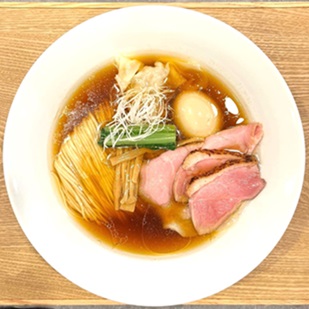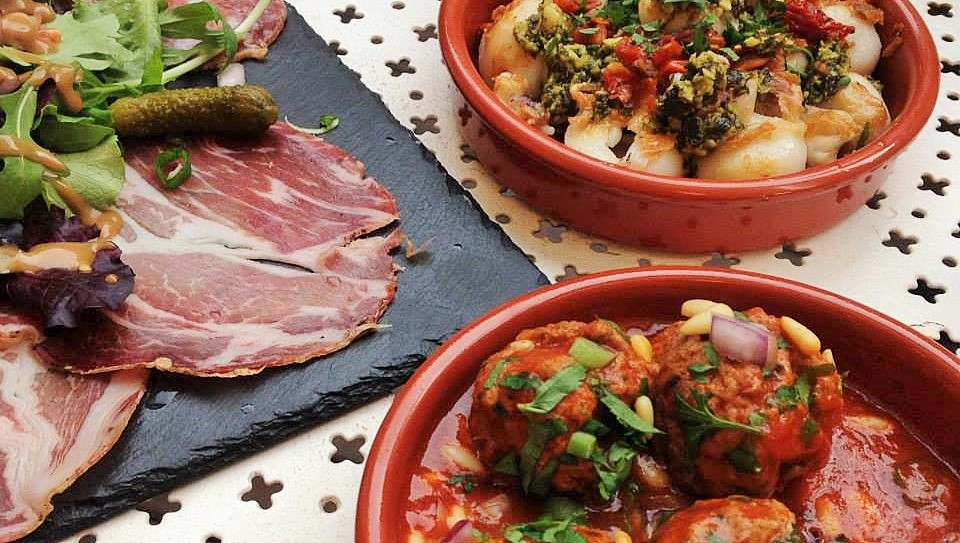The World’s Great Pizza Styles
Whether you're trekking to Naples, Italy, or New York City, here's a handy guide to help you identify great pizza styles around the world.
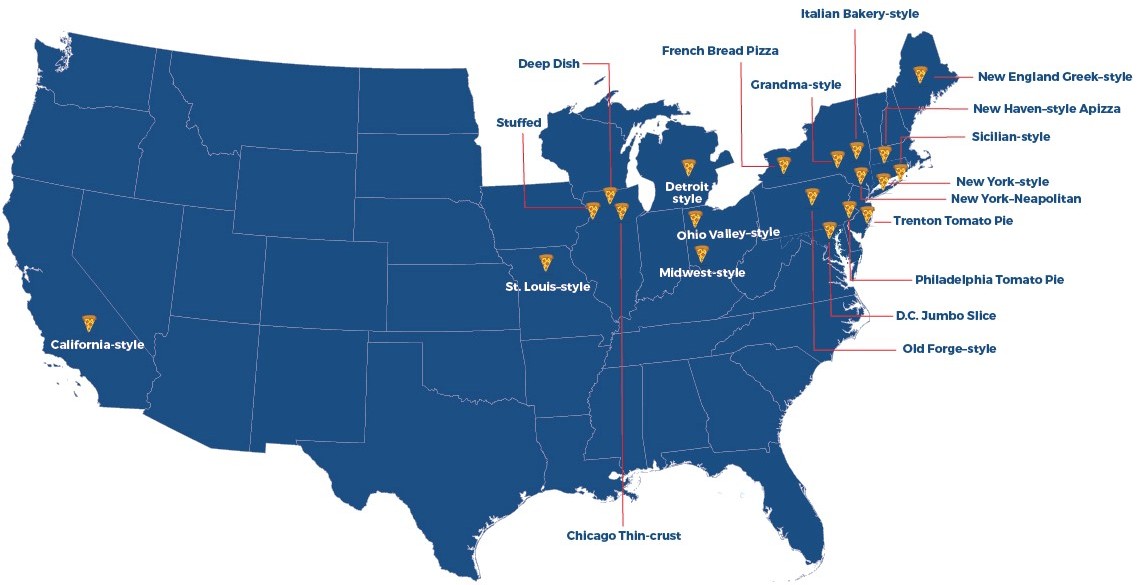
California-style: California-style pizza is distinguished by its inventive toppings — and departure from what every other state thinks of as pizza-appropriate. A vegetarian pizza might feature cremini mushrooms, baby spinach, caramelized onions, mozzarella, fresh asiago, pine nuts, garlic olive oil and parsley. Wolfgang Puck, and his original Spago pizza chef, the late Ed LaDou, put California pizza on the map with novelties like the barbecue chicken pizza.
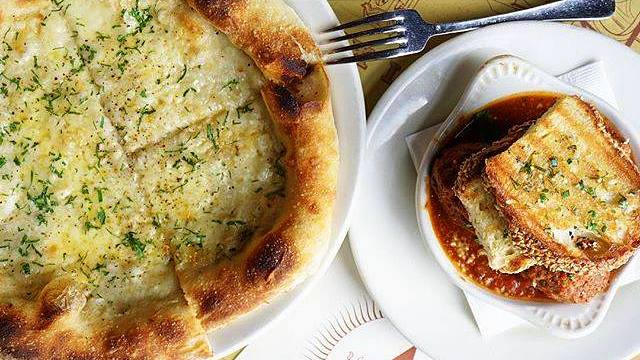
Calfornia-style Pizza/ Courtesy of Pizzeria Mozza
Chicago thin-crust: Thinner than New York-style and crunchier, it also is more tender and flaky. Almost pastry-like, the Chicago thin-crust has a smooth, highly seasoned sauce and toppings are added under the cheese, typically mozzarella. It is often cut into square pieces in what's known as the "party cut" or "tavern cut."
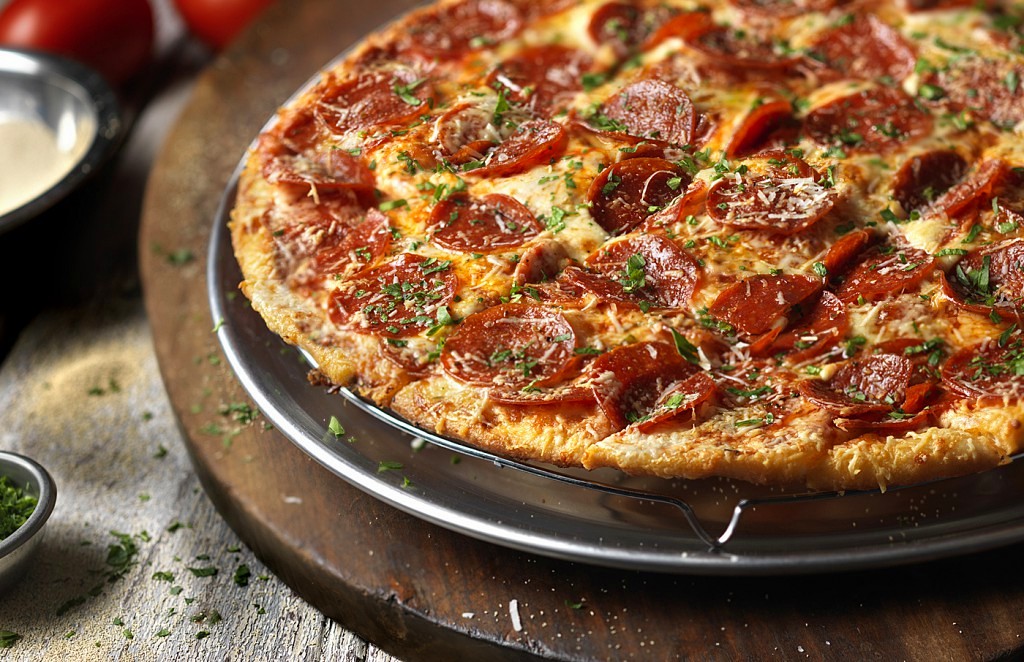
Chicago Thin-Crust Pizza/ Courtesy of honestudio.com
D.C. jumbo slice: As the story goes, one night in 1999, a Pizza Mart cook left some dough on the counter and closed shop. The next morning, owner Chris Chishti attempted to salvage the leftover dough by combining it with a fresh ball and baking the mass in one giant pizza. Since then, he’s been selling jumbo slices to the inebriated folks of D.C.’s popular nightlife neighborhood, Adams Morgan. Christi’s pizzas have grown in diameter from 22 inches in ’99 to 32 inches in 2004, with some competitors claiming even larger slices. Due to its size, the tip of the pizza must often be folded over to fit on the plate or in a box, making it look like the jumbo slice has been topped with a normal sized pizza slice.
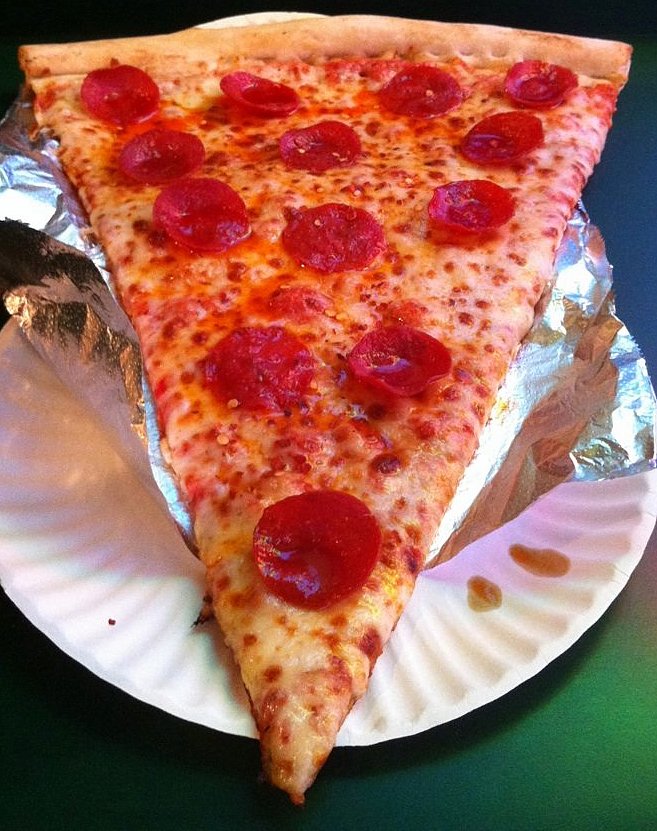
D.C. Jumbo slice/ Courtesy of Clayton B.
Deep dish: Also known as Chicago style, deep dish was invented in 1943 at Pizzeria Uno. To distinguish themselves from the other pies in Chicago’s Little Italy, owners Ike Sewell and Ric Riccardo made a larger, deeper pizza, chock-full of toppings, baked like a casserole in a high-sided pan. The crust is often thick with a yellow hue due to the addition of cornmeal or semolina. The pies usually come with the sauce on top, so the cheese doesn’t burn during the long bake time. While deep dish is often compared to sfincione, the Sicilian tomato, cheese, anchovy and breadcrumb-topped focaccia, it’s round rather than rectangular, and is sliced in wedges.
Deep Dish pizza/ Courtesy of ExtremeFoodies
Detroit-style: Developed in Detroit, Michigan, this style features a square pizza similar to Sicilian-style pizza with a thick, deep-dish crisp crust and toppings such as pepperoni and green peppers. It is sometimes served with sauce over the cheese. The crust is usually baked in a well-oiled pan to a chewy medium-well-done state that gives the bottom and edges of the crust a fried, crunchy texture while the interior retains its chewy texture.
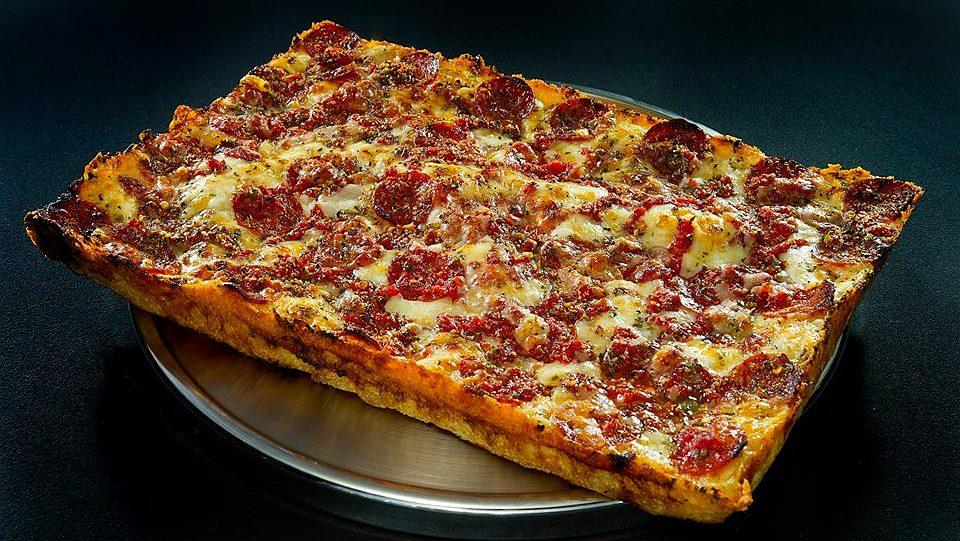
Detroit-style pizza/ Courtesy of Buddy's pizza
French bread pizza: A French bread loaf is cut in half lengthwise, placed on a large baking sheet, spread with pizza sauce and topped with cheese and desired toppings.
Grandma-style: Grandma Pies are meant to emulate the kind of home-baked creations that nonnas have made forever in their kitchens in Italy. Also known as pizza alla casalinga (“housewife pie”), they’re baked on sheet pans and topped with whatever’s lying around. The crust is chewy and thicker than a Neapolitan pie, but much thinner than the spongy Sicilian.
Italian bakery–style: Sometimes found in longtime Italian bakeries, this style blends elements of grandma and Sicilian pizzas. The square pizza is cooked in large sheet pans and cut into rectangular pieces.
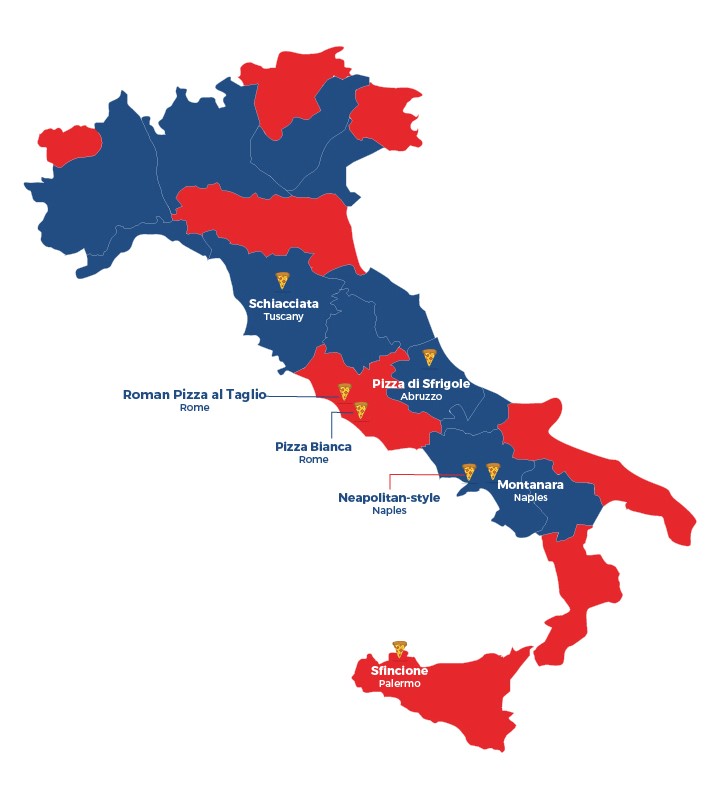
Midwest-style: The Midwest style is round, thin, very crisp yet tender-flaky, and is party- or tavern-cut. Sauces and topping preference differ across the Midwest, but this style is prevalent in the heartland.
Montanara: This fried pizza originated in Naples, Italy. Fried for about a minute, the dough is topped with sauce and mozzarella cheese and finished in a hot pizza oven for less than a minute so the cheese melts and the exposed crust chars.
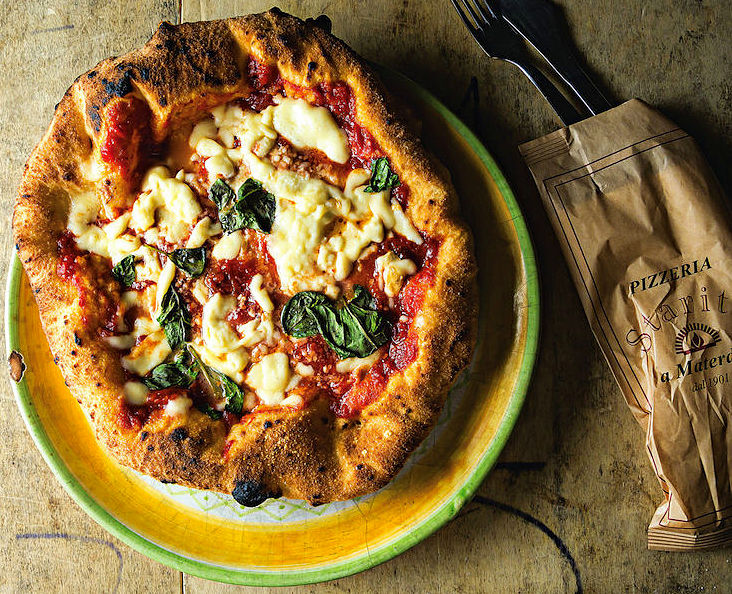
Montanara pizza/ Courtesy of saveur.com
Neapolitan-style: Known the world over, these small (about 10 inches in diameter), thin-crust pizzas are made in a wood-burning oven. They usually have a puffy lip or end crust and use the freshest ingredients applied sparingly for a careful balance. Among the most popular is the pizza Margherita -- topped with fresh sauce made from San Marzano tomatoes, fresh buffalo mozzarella or fior di latte, and fresh basil. Other traditional variations include the marinara, with sauce and a sprinkling of aged cheese; and the Napoletana, a marinara pie with anchovies.
New England Greek–style: Greek Pizza isn’t pizza topped with olives and feta, or Mediterranean-inspired in any way (unless you count the vague Italian origins it shares with all pizza). The style is found mainly in Greek-owned New England establishments that also sell pasta and gyros. Greek pizza is proofed in an oily round pan, then topped with cooked tomato sauce (often laced with tomato paste and copious amounts of oregano) and a combination of easy-melting cheeses (mozzarella, cheddar and provolone). A spongy, greasy crust meets a crisp-fried bottom in this New England classic.
New Haven–style Apizza: In New Haven, Connecticut, pizza is called “apizza,” cheese is “mootz” and “plain” means no mootz, just sauce. The opening of Frank Pepe’s on Wooster Street in 1925 marked the beginning of a pizza explosion in this town of Italian immigrants. The name “apizza” is thought to be a pronunciation from the Neapolitan town of Maiori, where Pepe was from. Although Pepe’s calls itself a pizzeria Napoletana, the style is New Haven. The dough is long-fermented and shaped into circular, oblong or rectangular pies that are cooked in coal-powered ovens. Locals claim the high-mineral content of New Haven’s tap water leads to a crispier crust. Pepe’s invented the famous white clam pizza, which goes great with bacon.
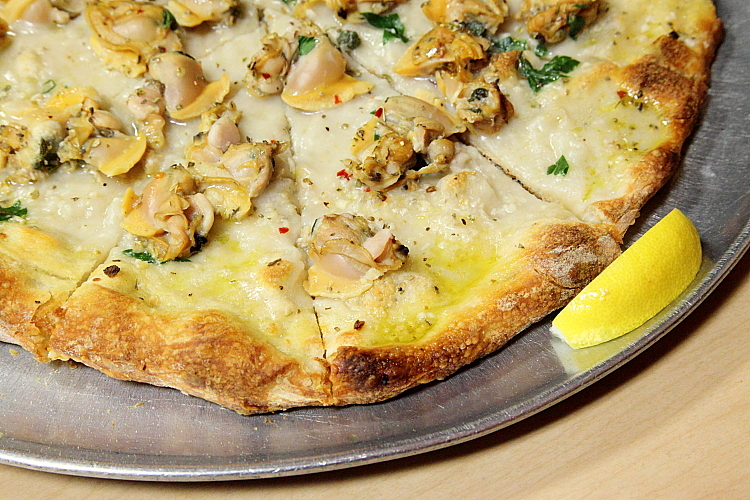
New Haven–style Apizza/ Courtesy of newyorkfood.typepad.com
New York–Neapolitan, aka "Neapolitan-American": Introduced to New York in 1905 by Neapolitan immigrant Gennaro Lombardi, New York-style pizza mirrors Neapolitan pizza’s thin, foldable crust and sparse toppings, but differs from the Italian versions in a few key ways. The pizzas are usually much larger, designed to be sliced rather than served whole. Proper New York pizzas are baked in coal or electric ovens, rather than wood-fired ones, and have a crisp crust from tip to edge.
New York–style: New York–style pizza is traditionally hand-tossed with a light layer of tomato sauce and mozzarella cheese. Additional toppings are placed on top of the cheese. Pies are large, typically around 18 inches in diameter, and commonly cut into eight slices.
Ohio Valley–style: Sold by the square slice, the crust is a mix between a deep dish and thin crust. Similar to focaccia bread, uncooked toppings are placed on top of stewed tomatoes and a minimal cheese base, then cooked.
Old Forge–style: Originated in Pennsylvania, a rectangular metal tray is brushed with peanut oil so the pale dough takes on a fried consistency. The sauce consistently has a sizable portion of onions; whether they're chopped chunky or sliced thin is up to the individual chef. But what distinguishes Old Forge pizza is its unusual cheese blends. Different at each establishment, combinations range from classics like mozzarella, Parmesan and Pecorino Romano to less common pizza cheeses like American and cheddar.
Philadelphia Tomato Pie: A Philly staple, this style is usually made with bread dough, without mozzarella, at old-time bakeries in longstanding neighborhoods. Giant rectangular pies are lathered with tomato sauce, sprinkled with Parmesan, and cut into squares.
Pizza Bianca: Also known as “white pizza,” this Roman variation is a plain pizza, sprinkled with coarse salt and spongy with olive oil. The crust can range from fairly thin to fairly puffy – more akin to focaccia.
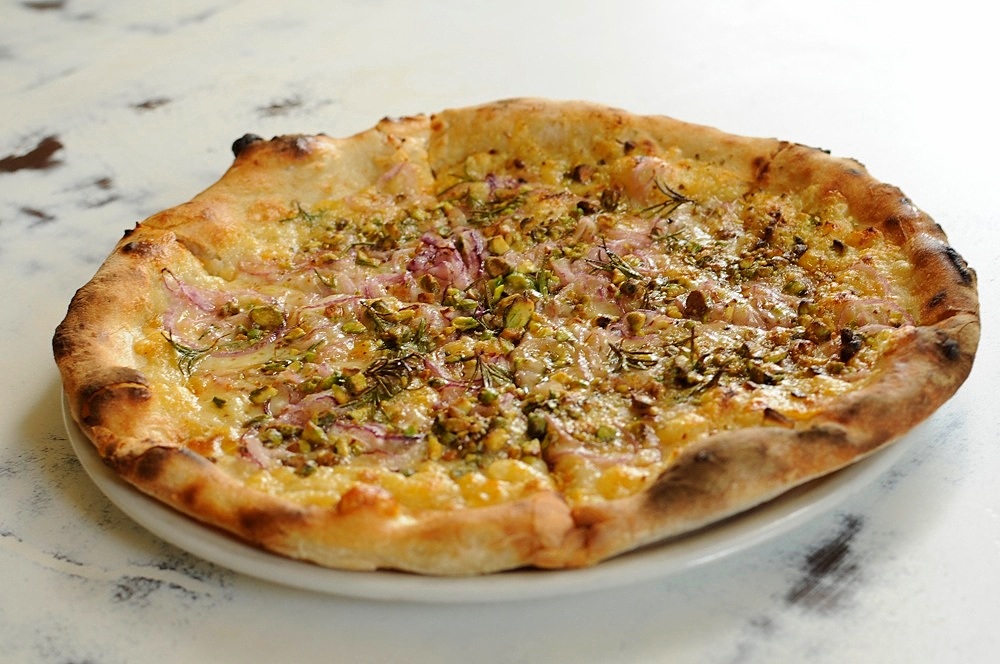
Pizza Bianca/ Courtesy of Pizzeria Bianco
Pizza di Sfrigole: Dating from a time when cooks made their own lard, this style incorporates the super-crisp meat bits as the fat renders. Lard, flour and salt are kneaded together, then luscious pig bits (or sfrigole) are added before it's baked. The result is super-flaky and almost pastry-like.
Roman Pizza al Taglio: Invented in Rome, Italy, pizza al taglio or pizza al trancio (Italian for pizza by the slice — literally "by the cut") is a variety of pizza baked in large rectangular trays, and generally sold in rectangular or square slices by weight.
Schiacciata: Synonymous with focaccia, or pizza without sauce, this style literally means "squashed" or "flattened down." A famous version is Schiacciata d'uva, made during the Tuscan grape harvest, which is scattered with sugared grapes. Other versions consist of the bread baked plain, then sliced in half, filled and baked again.
Sfincione: Focaccia topped with Sicilian tomatoes, cheese, anchovies and breadcrumbs.
Sicilian-style: When sfincione made its way to New York via Italian immigrants, the Sicilian was born. It has a thick, bready crust topped with tomato sauce and mozzarella. Pepperoni is commonly added. It’s baked in a steel pan, giving it a crunchy bottom, and cut in squares for by-the-slice ordering.
St. Louis–style: Featuring an unleavened, ultra-thin cracker-like crust and a topping of Provel — a processed cheese blend of provolone, Swiss and cheddar — St. Louis–style pies are large and cut into numerous square tiles (referred to as tavern- or party-cut). Thin crust and square cuts can be found throughout the Midwest, but Provel makes it St. Louis. For a true pizza experience, go to its birthplace, Imo’s Pizza, and order The Deluxe with sausage, mushrooms, onions, green peppers and bacon.
Stuffed: A variation on deep-dish, stuffed pizza, this style was introduced in Chicago at Giordano’s and Nancy’s in 1974 and features a second, thinner crust on top.
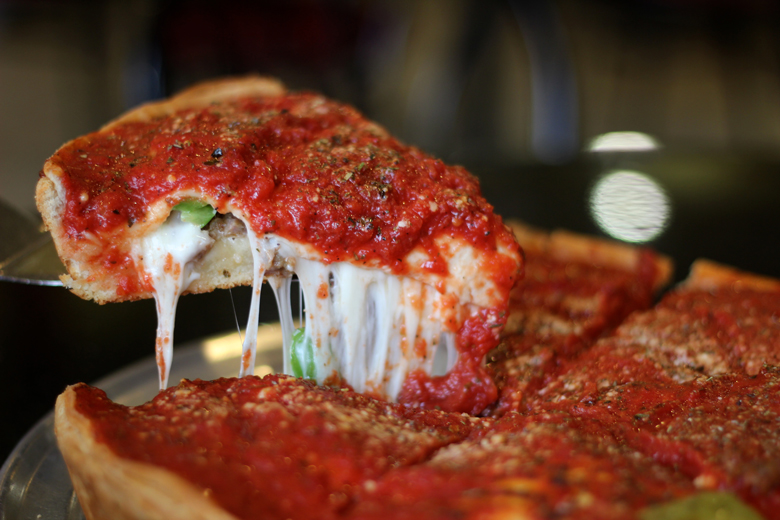
Stuffed pizza/ Courtesy of lionandmaven.com
Trenton Tomato Pie: A round pizza with a thicker crust (not as thick as the Sicilian), Trenton’s pies are notable for their chunky tomato sauce — crushed plum tomatoes plus seasoning — which goes on after the cheese and toppings.
Category:


